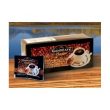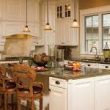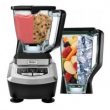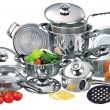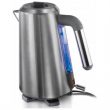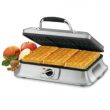Do you enjoy a cup of coffee? Do the baristas at the local coffee bar have your order memorized and start preparing it the moment you walk through the door?
| Best High-End Espresso Machine | Best Economic Espresso Machine | Best Budget Espresso Machine |
|---|---|---|
If you answered yes, then you’re among the 83% of Americans who drink coffee. Indeed, coffee continues to be a favorite beverage, and we drink it in a number of ways: black, with cream and/or sugar, lattes, cappuccinos, Americanos, espressos, caffeinated and decaffeinated. There are just so many choices…and costs. With a small specialty coffee averaging more than $3 at popular coffee bars, satisfying your coffee craving adds up quickly. That’s one of the reasons why coffee lovers invest in an espresso machine for the home where they can indulge without handing over hard–earned cash (after purchasing the device, of course)
The Real Thing
When thinking about purchasing a home machine, it’s important to look at some of the best espresso machine reviews so you know not only how it works, but how the different types affect the taste of your brew. For example, did you know some designs use boiling water and others use manmade pressure?
Technically, an espresso is made when pressure forces heated water through a puck or tamped portion of finely ground coffee. This liquid is then either drunk straight up as an espresso or as the base for lattes, cappuccinos or macchiatos. Purists argue that a boiling method doesn’t actually produce “espresso.” Rather, the result is just a very strong cup of coffee. However, some people are more lenient in their definitions, and simply want a machine that will give them a flavorful cup. Still, taste—and budget—should be determining factors in your best espresso machine reviews.
Categorized
There are three categories of espresso machines: steam, pump, and manual.
STEAM
Steam-powered machines are also called Moka pots. These are probably the most affordable version on the market—as inexpensive as $20—but some people believe they produce the lowest quality beverage.
There are no internal heating elements or electrical parts to the Moka, so it needs an external heat source, primarily the stovetop. When the water, which gets added to the bottom portion, reaches a boil, it creates steam. The steam then is the pressure that pushes the water into the upper portion and over the tamped coffee sitting in a filter.
Again some coffee aficionados insist this isn’t exactly espresso because boiling water doesn’t exert enough pressure and it gets too hot.
PUMP
The pump design is what purists refer to as the one and only type of espresso machine. This configuration uses an electrical pump to deliver at least nine bars of pressure (the unit of measure). What’s more, these devices have controls in place to heat water to the preferred temperatures, which is between 195 and 200 degrees (boiling is closer to 212 degrees).
However, there are variations within this category. Some models have one heating element and others have two, some have separate water reservoirs and broilers. Also the level of automation differs. For example:
• Semiautomatic
With this type of pump espresso machine, operators load in the finely ground coffee, tamp it, pour in the water, and turn on the machine. You also have to turn it off when it’s done. Some newer products in this group use premeasured and pre-tamped pods of coffee.
• Fully automatic
Believe it or not, the first fully automatic espresso machines popped up around 1938. Today’s updated versions use microprocessors to compute operations, such as the volume of espresso extracted. You still have to put in the coffee grounds and water, but other than that, everything is done with the push of a button.
• Super Automatic
This machine takes automation a step further by including a built-in coffee grinder. Often called espresso centers or espresso/coffee centers, they are very user-friendly. All you have to do is load the espresso beans into the hopper, pour water into the specified receptacle, push some buttons, and wait a few minutes until your espresso is done. What makes it super is that it grinds the beans to the appropriate granularity for the selected drink, tamps the grounds for you, and heats the water to the precise temperature and correct volume for that specific beverage. Some models have a separate shoot for pre-ground coffee. In fact, TheCoffeeBrewers.com suggests using pre-ground flavored coffee instead of flavored coffee beans. If you add treated beans to the grinder, their oils and residue remain behind on the blades and can infiltrate future grindings.
• Ultra Automatic
This is the most recent subcategory of pump espresso machines and it’s called “ultra” because it takes all the work out of users’ hands. The ultra machine will do everything the super does plus froth and steam milk automatically. Although most pump espresso machines feature a froth/steam wand attachment, all of them except the ultra mandate users froth or steam milk independently of the espresso-extracting function.
MANUAL
The manual espresso machine is sometimes referred to as a lever machine because operators must pull down a lever to create the pressure to brew a cup of espresso. An internal piston is pushed against the water. It is quieter and has fewer parts to clean and maintain. This one may be low-tech, but fans swear by the results. Expect to experiment before finding the right amount of pressure to apply to give you the strength of espresso that’s just right to your liking.
Final Thoughts
When conducting your best espresso machine reviews, also take these factors into consideration:
• Cost: The more high-tech a machine, the more it costs
• Space: Steam and manual machines take up less space than pump models, the largest of which can occupy 2 square feet of counter space
• Use: Are you an occasional espresso drinker or a regular? Choose a machine that can keep up with your demand.
Now, get your comparison-shopping started here by reading about these three models.
High-End Choice
Breville BES900XL Dual Boiler Semi Automatic Espresso MachineThis pump machine showcases a dual boiler system so milk can be heated and treated while simultaneously extracting the espresso. It also features temperature controls, an over-pressure valve and a low-pressure pre-infusion to promote consistency cup after cup. Program it for your personal preferences regarding shot temperature, shot volume, and automatic start time.
$1062.99
Economic Choice
Nespresso D121-US-BK-NE1 Citiz Espresso Maker with Aeroccino Milk Frother, BlackTo be used exclusively with Nespresso coffee capsules, this machine delivers cappuccinos, lattes, macchiatos in addition to an espresso with a frothy crema topping. A preheat time of 25 seconds and a 19-bar pressure pump creates an espresso that is ready in minutes. The automatic shutoff powers down the machines after 9 minutes of idle time. A pivoting cup tray adjusts for different cup heights, which is convenient for making iced coffee drinks.
$299
Budget Choice
BELLA Espresso MakerIf you’re new to brewing your own espressos, this easy-to-use machine is a great one to learn on. Although compact in size, it produces a satisfying cup of espresso, or use the steam wand to turn the brew into a cappuccino. As a safety precaution, the steam-pressurized cap prevents opening until the machine has cooled down.
$39.99

